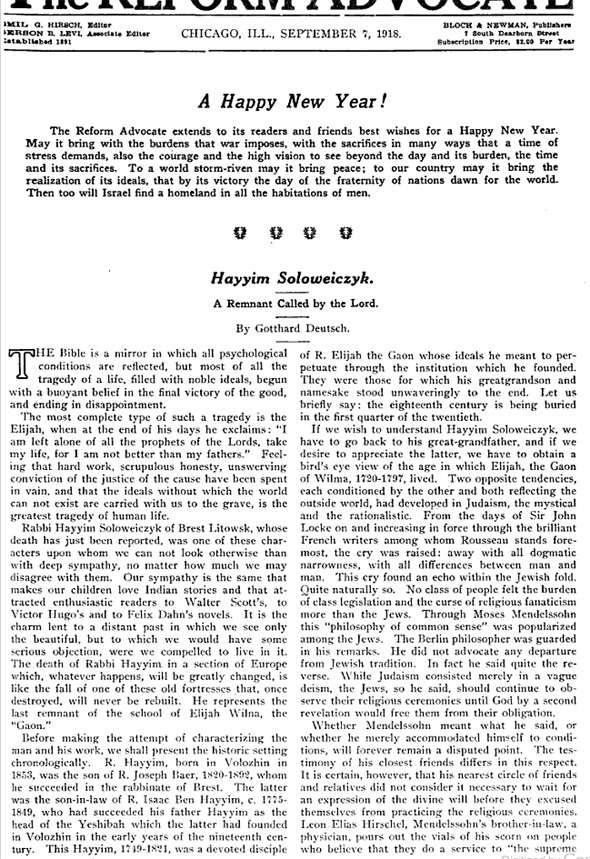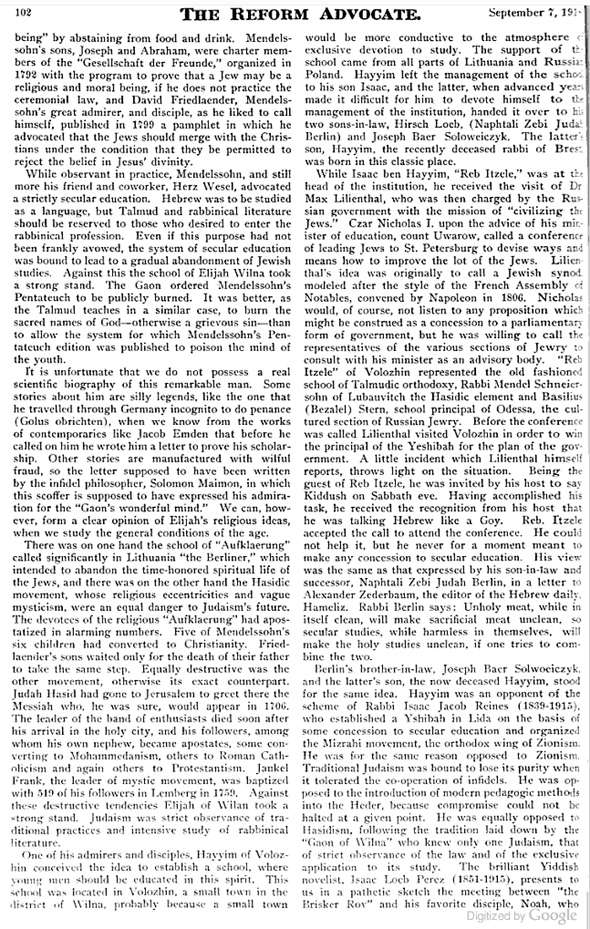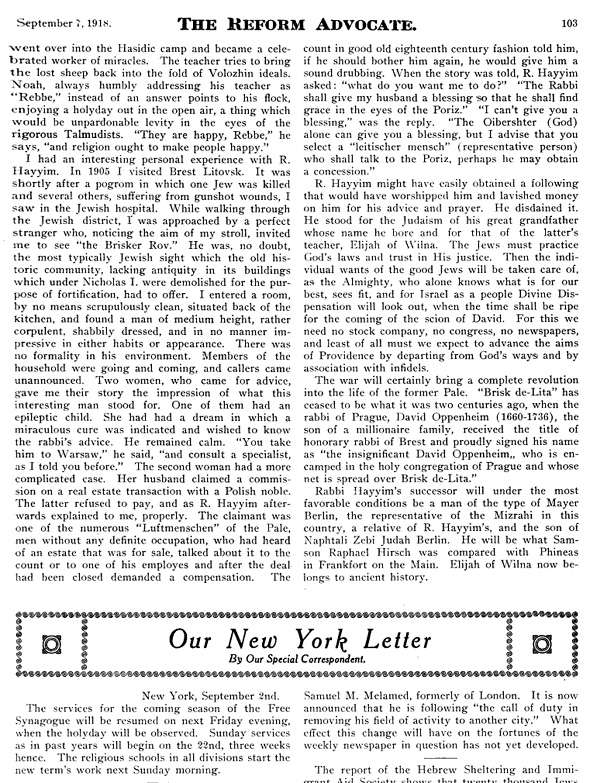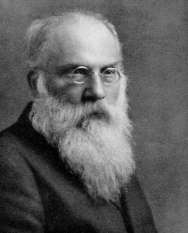The obituary which "record[ed] its profound esteem for the life work of Rabbi Hayyim Soloveiszik"seems to have been written by Rabbi Gotthard Deutsch who met him. Below is a full account of his impressions formed from meeting him. The impressions are on the third page, but one might as well read the whole article.





Note how genuine the impressions seem. Busy house with people coming and going. Visitors asking all kinds of questions, and assuming he could give magnificent advice, and him acting very Litvish, trying not to give blessings and demurely directing them to see a doctor and the like. Why, it he really was there! It's a little ironic that in 1918 Deutsch declares that "Elijah of Wilna now belongs to ancient history," although he is correct insofar as that world itself is now gone, with a neo-world in its place. But he sure was wrong that the world of Rabbis Samson Raphael Hirsch and Meir Berlin would replace it, rather than these remaining alternatives.

They say people used to post public announcements, like lost-and-found signs, on the walls of R' Chaim's house, it being such a public place.
ReplyDeleteCorpulent?
ReplyDeleteAlso, who knew that John Locke had a knighthood. (Actually, I am having trouble confirming that he in fact did.)
Corpulent? I wouldn't say excessively so, but he certainly could not be called slim. I actually cropped the photo you see in the post. Here's the full photo:
ReplyDeletehttp://img121.imageshack.us/img121/3341/chaimsoloveitchik.jpg
Re Locke this timeline doesn't mention it, no one calls him Sir John Locke, and as you said, it seems impossible to confirm. Thus, I'm not buying it (yet).
You should see a spike in volume in the next few hours. you've hit the big time. Gil just linked to this post.
ReplyDeleteI just looked at the whole shot. My standards for corpulence require that you be able to see it in the face/neck. Overweight, yes. corpulent, no way. But, the word may have had less of a connotation of extreme weight back then, or, given that (at least in the US) people are generally heavier now than they were then, perhaps that really was extremely overweight then.
ReplyDeleteBoth are probably somewhat correct. It's also possible that R Chaim was fat especially as compared with other Lithuanians, where diets probably were not what they were in America, and in both places not what they are today.
ReplyDeleteJust to give a general idea of how body shape/ size changes in a short time, there was a Rabbi David Miller of California who was a one man crusade for mikvah. He wrote books about it, promoting taharas ha-mishpacha, and even held an idiosyncratic halachic position that it is possible and easy to construct a mikva in one's own home. (There's a story about that fact, which Dr. Yitzchak Levine who writes American J. history articles for the Jewish Press can tell you.) In one of his books, published in 1930, he writes like it is a well know fact that the average height of a Jewish man is 5' 4" and women 5' (if memory serves). I think he even cites some kind of scientific survey. Even if it was really 5' 6" and 5' 2" . . .
Speaking of which, I recall a Civil War exhibit which featured a number of battle-worn uniforms. Some of them weren't that small, but some of those guys could not have been taller than 5' 3" with maybe a 36" chest. Now, maybe that just reflects the desparation and that they didn't turn away smaller men like they do today, but I'm thinking that 1860's 5' 3" was 2010's 5' 6".
Besides the appealing depiction of R' Chaim as a modest, wise, rational, and thoroughly traditional talmudist, the writer offers a critique of Haskalah as basically assimilationist in motivation - despite his own Reform credentials.
ReplyDeleteIs that fact that the Wilna Gaon burned the Mendelson bible? Allegedly the Hatam Sopher threw it on the floor, Rabbi Jehezkel Landau was against it. I know there were some important rabbi's on the subscription list, but who from the world of the yeshiba supported it?
ReplyDeleteNo, if anything it's the opposite of the fact. There will be more to write later, but this seems to be confusing the Mendelssohn Chumash with Wessely's Divre Shalom Ve-Emet, which may have been bound up in the stocks in Vilna and then burned, withthe Gra's approval. However, there are credible reports that the Gra liked the Chumash, especially Wessely's commentary on Vayikra. Needless to say, these reports have led to a very interesting take on it in Chabad historiography.
ReplyDeleteI feel I'm missing out on a significant comment, obscured by a typo:
ReplyDelete"Why, it he really was there! "
--Phil
I'm just glad that MDJ has standards for corpulence.
ReplyDeleteScholarship knows no bounds!
MDJ I refer you to the gemara in kiddushin 33b and rashi there 2 lines up from the bottom
ReplyDelete